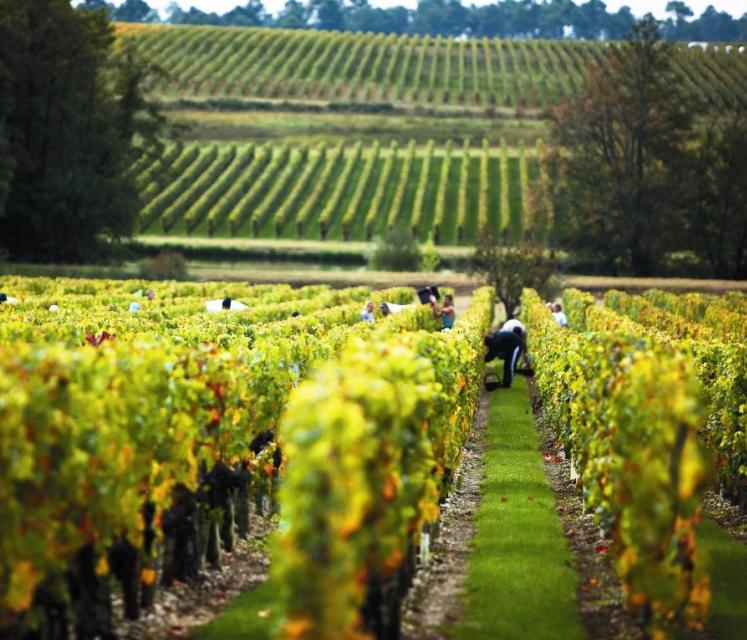
Available in wine cellars in the region and in supermarkets. Enjoy a tasting at CIVB wine bar in Bordeaux
Spanning the entire department of Gironde, the Bordeaux A.O.C is made up of a patchwork of soils giving its wines a wide and varied character. As a result, depending on the grape varieties planted, ‘grave’ soil (small pebbles) will produce a wine rich in tannins and elegance, whereas a clay-limestone soil produces round and powerful wines and an alluvial soil, a full-bodied and virile wine. Although these wines differ through the diversity and richness of their grape varieties, they all feature some common Bordeaux characteristics as they share the same climate, fruit is farmed using similar methods and they are the heirs of ancient traditions.
After the winemaker processes the juice from their vineyards, it is the trader’s turn to use expertise in buying and blending the various Bordeaux A.O.Cs, purchasing in bulk, to provide the consumer with balanced products which highlight the characteristics that make Bordeaux one of the most famous vineyards in the world.
Historically, the Bordeaux region has produced a significant volume of white wines which in the past, were particularly appreciated by the English as well as the Dutch for distillation. At the beginning of the 18th century, ten times more white than red wine was produced. The majority of these wines were semi-sweet. Today this trend has reversed. However, given the improvements made to plants (grape varieties and root stocks) and wine making techniques, the winegrowers effort and evolving consumer tastes, these white wines from the same terroirs as the reds are regaining their former glory and being widely appreciated by connoisseurs. Blended, according to taste, the winemaker’s careful selection and savoir-faire produce a range of dry, sweet and semi-sweet wines.
Although Bordeaux Clairet dates back to the Middle Ages, Bordeaux rosé is much more recent. Made from the same grape varieties as red Bordeaux, these wines are best enjoyed in their youth and should not be served within 2 to 3 years.
After a brief maceration to achieve a pale colour, rosé wines are processed in the same way as white wines and quickly bottled.
Clairet wines enjoy a longer maceration providing a more intense colour as well as smooth tannins. Some undergo a short ageing period in barrels.
The decree dated 3rd April, 1990 is what defined the Crémant de Bordeaux A.O.C. Prepared with duly approved white or rosé Bordeaux wines, sometimes with red grape must, processed with white, Crémant de Bordeaux wines do not have the same brand image for connoisseurs as other A.O.C sparkling wines due to their low production yields. However, they are produced in the same way, using traditional techniques, i.e. a second fermentation in bottles after the spirit has been added. Crémant de Bordeaux has become popular with consumers seeking fresh, fruity and beautifully presented wines.